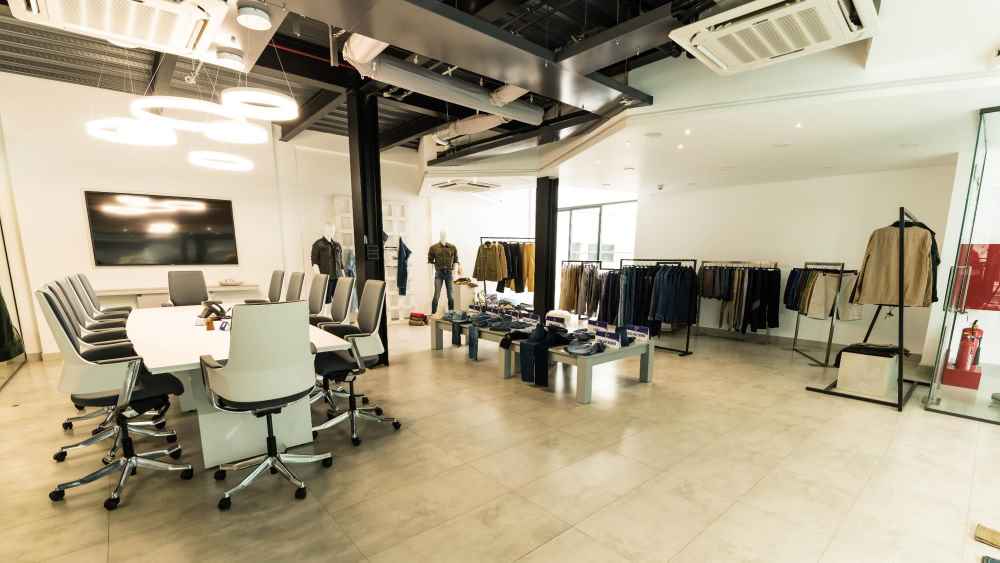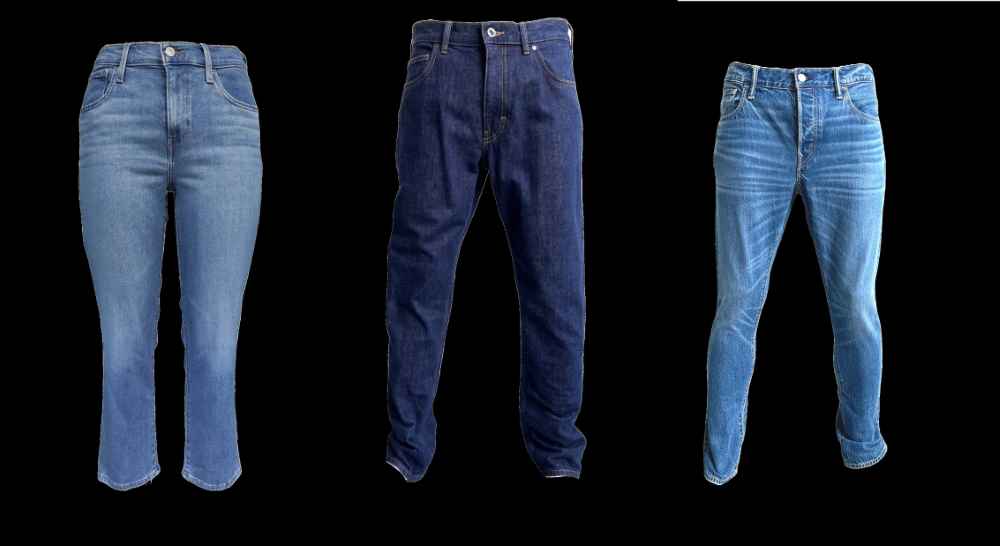
The journey towards ‘green jeans’ and sustainable fashion has made significant strides worldwide, and at its heart is Hirdaramani Apparel, a pioneer and trailblazer in Sri Lanka’s apparel industry. Since joining the Ellen MacArthur Foundation’s ‘The Jeans Redesign’ project in 2019, the Company’s continued commitment to sustainably manufactured jeans has been focused, committed, and authentic.
In an industry where trends are evolutionary, jeans remain timeless, versatile and a wardrobe staple for most. Jeans have a history dating over 160 years, originating as ‘work wear’ clothing for mining and industrial wear before capturing the love of the fashion-conscious. Today, the global jeans market is valued at over USD 75 billion and is poised for further growth[1]. However, this comes amid heightened environmental concerns, prompting the industry to rethink its manufacturing practices.
Hirdaramani Apparel is leading the charge by reimagining denim manufacturing through a sustainability lens. The partnership with the Ellen MacArthur Foundation’s ‘The Jeans Redesign’ project underscores its commitment to transformation. With input from 80 experts across industry, academia and NGOs, the project is actively encouraging leading brands, mills, and manufacturers to revolutionize the way jeans are designed and made.
The Head of Design (Woven) at Hirdaramani Apparel, Piyumi Perera highlights the evolution of its approach. “In our industry, we work in a design environment where the focus is on selling more, selling fast, and selling at competitive rates, which impacts the industry as a whole,” she notes. “Our customers, brands, and our leadership influenced us to be more cognizant of this and make necessary changes to our manufacturing processes. Here, our steadfast journey towards eco-friendly or green jean production began over 15 years ago.”

A Path to Responsible Manufacturing
The three primary areas that cause most harm to the environment in denim manufacturing are water use, chemical and dye use, and energy consumption. Leveraging technology and innovation, the Sustainability and Design team at Hirdaramani Apparel work together to ensure that the average water consumption per garment since 2019 was reduced by 23 percent and energy consumption in Mega Joules per garment was reduced by 9 percent. These statistics relate to apparel across Hirdaramani – among which 50-70 percent of its production is attributed to denim.
“When we initiated the concept of the Hirdaramani Discovery Lab in 2017, we realized that from the outset, product design needed an additional dimension of sustainability in intentional material choices and making of processes,” says Piyumi. “It’s not just about a sustainable fabric but considering the end-to-end process and the garment’s lifecycle. Since we can’t scrutinize every aspect, we have brought in sustainability controls through the highest certifications that abide by global sustainability standards. Our Sustainability team sits alongside the Design team at Discovery Lab. The two teams work together to ensure our designers are aligned with the Hirdaramani sustainability commitments from a product perspective. This specialised knowledge base is readily available for our designers.”
Understanding the harmful impact of chemicals, including the use of synthetic indigo dyes and finishing agents, Hirdaramani Apparel utilizes three-in-one chemicals (wetting, levelling, and pre-wash) to streamline chemical usage. Extensive sample testing at the company’s denim laundries guided by EIM (Environmental Impact Measure) software aims to minimize energy, chemical, water, and labour requirements per garment.
The Company has also adopted laser technology for the denim with its distinctive whiskers and washed-out appearance, effectively reducing the demand for chemicals and water in the dry process of denim creation.
Aligned with circular principles, the commitment to sustainability manifests in minimized reliance on processes like Potassium Permanganate spray, pumice stone washing, and sandblasting, while some processes have been fully eliminated. Furthermore, rigorous lab testing on dyes and chemicals is conducted before production to identify and mitigate the use of hazardous chemicals in addition to optimizing overall efficiency.
The Group has also invested in state-of-the-art sustainable washing machines that enable precise measurement and management of chemical usage. Committed to responsible practices, there is adherence to ZDHC 3.0 guidelines (Zero Discharge of Hazardous Chemicals) and meeting of RSL (Restricted Substance List) requirements throughout the chemical management processes, spanning from input to output.
Achieving True Circularity
Since joining the Ellen MacArthur Foundation’s ‘The Jeans Redesign’ project in 2019, Hirdaramani Apparel has successfully produced over 200,000 jeans for a prominent American brand. The commitment to pioneering guidelines in recycled denim production reflects the Company’s sincere vision to become one of the most sustainable apparel manufacturers.
Piyumi emphasizes that the four crucial parameters in eco-friendly jean manufacturing are durability, traceability, recyclability, and material health. “Each of these elements holds significance at every stage of the jean value chain. We are witnessing a growing number of startup brands embracing sustainable jean design and production, and we are happy to actively support these emerging brands to enter the market and contribute towards making a real difference.”
Since 2019, the criteria for circular denim has evolved and become more inclusive and easier to adapt to. Initially, the project began with the agreement to use 10 percent post-consumer waste cotton, with the remaining components being organic cotton, allowing 2 percent to be synthetic. Today, the initiative has progressed to a refined standard with 5 percent post-consumer waste cotton and the remaining 95 percent sourced from natural fibres. An overall 2 percent by weight of synthetic components is accepted.
“As we envision the future of sustainable fashion, we must prioritize three key criteria: making circular design the norm, ensuring the economics work, and shifting product design as well as systems redesign,” concludes Piyumi. “With learning from ‘The Jeans Redesign’ project, we are at the forefront of a fashion revolution and are actively contributing to a transformation in an industry often criticized for its negative environmental impact.”
[1] https://www.grandviewresearch.com/industry-analysis/denim-jeans-market#:~:text=Report%20Overview,5.8%25%20from%202023%20to%202030.


